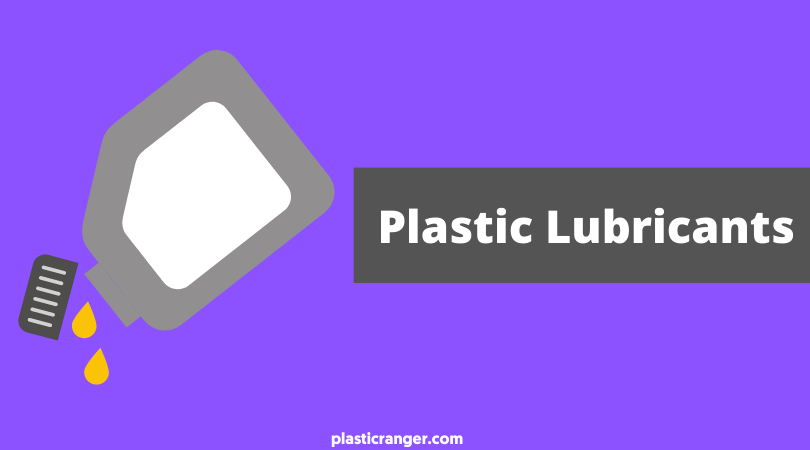Lubricants are essential to increase a plastic part’s lifespan. Today, I will write a detailed piece on choosing the best lubricant for plastic components.
How to Choose the Right Plastic Lubricant?
Plastic lubricants are essential for greasing or polishing plastic parts to increase their life and reduce power consumption and friction.
When choosing a lubricant, the most crucial factor is its compatibility with the plastic part. Research studies have consistently shown lubricating plastic sliding bearings can increase their life span by four to five times.
Lubricants based on silicone, perfluorinated PFAE, synthetic hydrocarbons (SHC or PAO), and mineral oils work nicely with plastics. Esters and polyglycols are generally incompatible with plastic, although there are exceptions based on the type of plastic material.
How to Figure Out the Compatibility of Plastic Parts and Lubricants?
To determine the compatibility between lubricants and plastics, the best way is to observe the changes in the physical properties of plastic material under conditions such as environment, speed, and load. Manufacturers should closely monitor hardness, strength, elongation, weight, and volume changes.
Another critical determining aspect is reflecting on your work’s worst possible scenarios while conducting tests.
Lubricants and plastic materials will be exposed to high temperatures and adverse environments, changing them in specific ways.
Choosing an unsuitable lubricant or grease will severely affect plastic parts. Stress-cracking, discoloration, warpage, and losing structural integrity are common scenarios when such mistakes happen.
Criteria for Choosing Best Lubricants for Plastic Parts

There are three important criteria to follow for choosing a plastic lubricant:
- Viscosity
- Chemistry
- Aging Resistance
Viscosity
High viscosity chemicals are the best option as lubricants, protecting plastic parts against cracks, piercing, or adverse effects.
Higher loads would need oils with higher viscosity oils to sustain a lubricant film from start to top; on the other hand, lighter loads require lower viscosity oils to prevent drag.
Chemistry
A plastic part’s compatibility with lubricants depends on its chemical structure.
The lubricants that work best with plastics are based on perfluorinated PFAE, mineral oils, synthetic hydrocarbons (SHC or PAO), and silicone.
Lubricants made from esters and polyglycols are not suitable for most plastics.
Mixing additives with plastic materials can also lead to an unplanned reaction between the lubricant and plastic. The type of additives being used ultimately determines the effects.
Rigid additives like molybdenum and graphite can pierce and weaken a plastic part; however, PTFE additives, even after having the same rigidness, can be very advantageous in some instances by providing dry lubrication.
Aging Resistance
Lubricants are highly likely to affect plastic parts as they age. That’s why synthetic lubricants are the best choice for marinating the plastic part for extended periods.
The key to keeping the plastic in good shape for extended periods is to avoid outgassing byproducts of plastic, specifically formaldehyde, and styrene.
Engaging Read – Top 5 Heat Resistant Plastic Materials | A List of High Temp Plastic Materials
Recommendations

Undoubtedly, the premier choice for lubricating plastic is a mineral-oil-based lubricant. These lubricants excel in standard plastic applications and do not degrade plastic materials.
Yet, as rapid prototyping evolves, necessitating higher temperatures, more extended operational periods, and quicker cycle times, the focus has shifted toward synthetic lubricants, notably hydrocarbon-based ones.
These lubricants are lauded for their compatibility with most plastics, resistance to aging, and superior long-term performance across temperatures ranging from -51 to 150°C.
Another viable option is PFAE lubricants, known for their exceptional compatibility with even the most challenging plastics.
Their ability to balance adhesion with adequate wetting of plastic surfaces makes them a top choice for high-performance lubricants, especially useful at elevated temperatures up to 260°C.
The primary limitation, however, is their high cost, making them suitable only for essential applications.
Silicone-based lubricants are advisable for applications under low load. These lubricants are compatible and function effectively within a broad temperature spectrum, from -67 to 218°C.
Industry Applications of Plastic Lubricants
Automotive
Plastic lubricants in automobiles extend the life of components like gears and bearings by reducing friction and improving heat resistance.
They’re essential for smooth, noise-free operations in systems like power steering and window lifts, mitigating issues like ‘stick-slip’ that affect the driving experience.
Electronics
In electronics, plastic lubricants are vital for smoothly functioning switches, connectors, and potentiometers.
They prevent electrical resistance and corrosion, which is essential for signal integrity.
Formulated to withstand high temperatures, they also have anti-static properties, crucial for the reliability of sensitive electronic devices.
Medical Devices
For healthcare, devices such as syringes and inhalers, as well as biocompatible lubricants, are used to meet health and safety standards.
They undergo rigorous testing for toxicity and are indispensable for the smooth operation of devices like auto-injectors and surgical robotic arms, where precision is paramount.
Consumer Goods
Plastic lubricants provide smoother operation and extended durability in consumer goods, from home appliances to high-performance toys.
They are crucial to noise reduction in devices and enhancing the performance of toys like RC cars or drones.
What About Lubricating Plastic Gears?
Like any other plastic pat, plastic gears also need sufficient lubrication for smooth momentum.
The importance of lubricating ears can be best understood when they work without being a lubricant for a prolonged time.
When a set of gear teeth comes into contact, the point of contact experiences compressive pressure and moves as the gear turns.
After sustained repetitions and compressive stress, the plastic material can undergo certain issues, such as:
- Increased friction
- Heat generation
- Exposed surface asymmetry
- Wearing down the external surface
- Increase in force needed to move the gear
Anyone who has worked with plastic gears would realize its importance for making them faster, smoother, and even more damage-resistant.
However, as gears are made to be used without lubricants, special attention must be given to do’s and don’ts while lubricating.
Lubricating materials silicone, PTFE, and graphite are prime choices in plastic gear’s internal lubrication.
The most critical factors to consider while choosing lubricants should be chemical compatibility, thermal stability, outstanding lubricity, and compatible viscosity.
Fascinating Read – What is PVDF (Polyvinylidene Fluoride) | A Detailed Guide
FAQs
Below are the frequently added questions about lubricants for plastic. Let’s dig deep to know more.
Is it necessary to grease or lubricate plastic gears?
Lubricating or greasing isn’t always necessary. Most plastic gears can run without lubrication; however, using the right lubrication can increase life expectancy and prevent cracks.
Can vaseline be used as a lubricant?
Vaseline or petroleum jelly is compatible with plastics but won’t give ideal results. Even if you go with it, checking its chemical compatibility with plastic is advised.
What is Teflon grease?
Teflon grease comprises PTFE and can be used in most plastic parts. The presence of PTFE ensures a dry film formation and avoids solid containments.
How to lubricate plastic wheels?
A PTFE spray will be perfect for lubricating plastic wheels. It’s readily available and manufactured by many brands.
Is Silicone Spray a dry lubricant?
It is not a dry lubricant and shouldn’t be used here; pressure and load-bearing are involved.
Suggested Read
- What is the Best Glue for Plastic Parts | The Ultimate Guide
- Which is the Best ABS Glue? | The Definitive Guide on Bonding ABS Properly
- What is the Density of Plastics? | The Complete Guide
- Plexiglass Vs. Acrylic | What are the Differences and Similarities?
- Top 10 High Impact Resistant Plastics
- Which is the Best Acrylic Glue? | The Best Plexiglass Glue
- 6 Best Plastic Molding Techniques | A Complete Analysis
Final Thoughts
To conclude, carefully selecting plastic lubricant ensures its durability and optimal functioning. It is imperative to consider the plastic type, operating conditions, and specific requirements of the application when choosing a suitable lubricant.
Understanding the lubricants’ properties and characteristics is vital to avoid any harm or deterioration to the plastic components. Additionally, selecting high-quality lubricants from reputable manufacturers can offer superior protection against wear and tear, reduce friction, and enhance system efficiency.
Appropriate lubrication can prolong the lifespan of plastic parts, decrease maintenance costs, and is an integral part of any mechanical system design.
Kindly share your review in the comment box.
Quick Navigation


Hi there, regarding Vaseline your article says, “Vaseline or petroleum jelly is compatible with plastics but won’t give ideal results.”
What kind of results will it give?
And what would “ideal results” be?
Thank you!
I know vaseline/petroleum jelly will degrade rubber and some types of plastics. (Though I’m not a plastics specialist,) I thought I might help our advisor since I am sure he is trying to progress in his career threshold.
I don’t think the degradation will be that intense.
What type of lubricant is best for vintage plastic toy soldiers from the 60s and 70s, especially those which have became quite brittle?